What to do if my YASKAWA Z1000 is overloaded?
- GGregory JohnsonAug 29, 2025
If the thermal sensor of the YASKAWA Controller drive triggered overload protection, reset the drive by pushing the Reset key on the keypad or cycle the power supply.
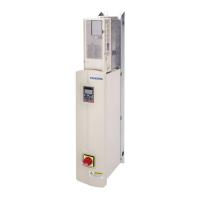




What to do if my YASKAWA Z1000 is overloaded?
If the thermal sensor of the YASKAWA Controller drive triggered overload protection, reset the drive by pushing the Reset key on the keypad or cycle the power supply.
What causes a motor overload on my YASKAWA Controller?
A motor overload on your YASKAWA Controller can be caused by: * An excessively heavy load: Reduce the load. * Cycle times that are too short during acceleration and deceleration: Increase the acceleration and deceleration times (C1-01 through C1-04). * Driving a general-purpose motor below its rated speed with a high load: Reduce the load, increase the speed, or use a motor specifically designed for low-speed operation.
How to fix Undervoltage error on YASKAWA Controller?
If the DC bus voltage dropped below the level specified in L2-05, the contactor to suppress inrush current in the drive was opened, or there is low voltage in the control drive input power when the drive was stopped and a Run command was entered, you can reset the YASKAWA Controller drive by pushing the Reset key on the keypad or cycle the power supply.
What to do if YASKAWA Z1000 motor stalls or oscillates at start?
If the motor stalls or oscillates when starting, increase the pull-in current in parameter n8-51.
What to do for output phase loss in YASKAWA Z1000?
Output phase loss in your YASKAWA Controller can occur due to: * A disconnected output cable: Check for wiring errors and ensure the output cable is properly connected. Correct any wiring issues. * A damaged motor winding: Check the resistance between motor lines. Replace the motor if the winding is damaged.
What causes a DC bus undervoltage on a YASKAWA Z1000?
A DC Bus Undervoltage error in your YASKAWA Controller can be caused by: * Input power phase loss: The main circuit drive input power is wired incorrectly. Correct the wiring. * Problems with the voltage from the drive input power: Check the voltage and correct it to be within the range listed in the drive input power specifications. If there is no problem with the power supply to the main circuit, check for problems with the main circuit magnetic contactor. * Worn main circuit capacitors: Check the maintenance time for the capacitors (U4-05). Replace either the control board or the entire drive if U4-05 exceeds 90%.
What does control circuit error mean on YASKAWA Z1000 Controller?
A control circuit error on your YASKAWA Controller indicates a self-diagnostic error in the control circuit. Cycle power to the drive. If the problem continues, replace the control board or the entire drive.
How to fix 'Cycle Power to Active Parameters' error on YASKAWA Network Accessory?
If you receive a 'Cycle Power to Active Parameters' message with your YASKAWA Network Accessory, this indicates that the drive is not compatible with the option software version. To fix this, turn off the power and upgrade the communication option parameters. This alarm can occur when the option software version is older or an incompatible option is installed to the drive.
How to fix a ground fault on a YASKAWA Z1000 Controller?
A ground fault in your YASKAWA Controller can be due to several reasons: * Damaged motor insulation: Check the insulation resistance of the motor and replace the motor if necessary. * A short circuit caused by a damaged motor cable: Inspect the motor cable for damage, remove any short circuits, and reapply power. Check the resistance between the cable and the ground terminal, and replace the cable if needed. * Excessive leakage current at the drive output: Reduce the carrier frequency or the amount of stray capacitance.
What to do if my YASKAWA Controller shows a Ground Fault error?
If a current short to ground exceeds 50% of the rated current on the output side of the YASKAWA Controller drive, try resetting the drive by pushing the Reset key on the keypad or cycle the power supply.
| Model | Z1000 |
|---|---|
| Category | Controller |
| Humidity | 95% RH or less (non-condensing) |
| Control Method | V/F Control |
| Frequency Range | 400 Hz |
| Protection | Overcurrent, Overvoltage, Undervoltage, Overheat |
| Communication Options | Modbus |
| Operating Temperature | -10 to 50°C |
| Storage Temperature | -20 to 60°C |
| Altitude | Up to 1000 meters without derating |
| Cooling Method | Forced Air |
| Enclosure Rating | IP20 |
| Voltage Class | 200V, 400V |
Information on Yaskawa products, responsibilities, and manual usage. Includes applicable documentation, symbols, terms, and trademarks.
Provides supplemental safety information and defines safety conventions used in the manual.
Safety precautions related to handling and receiving the drive.
Details on Z1000 model selection and control mode selection.
Procedures for checking the drive model and nameplate information upon receipt.
Lists the available enclosure types for Z1000 drives and associated models.
Overview of the drive components for IP20/NEMA 1 and IP00/Open-Type enclosures.
Safety precautions for mechanical installation, including fire, crush, and equipment hazards.
Covers installation environment, transporting the drive, and correct installation orientation and spacing.
Electrical safety precautions including shock hazards, fire hazards, and handling procedures.
Illustrates how to connect the drive and peripheral devices for BACnet communication.
Details on wiring the main circuit of the drive for different voltage classes and rectification options.
Shows the different main circuit terminal arrangements for various drive capacities.
Procedure for removing and reattaching the terminal cover for wiring.
Instructions for removing and reattaching the HOA keypad and front cover.
Procedure for removing and reattaching the top protective cover.
Describes functions, specifications, and procedures for safely wiring the main circuit.
Details proper procedures and preparations for wiring the control terminals.
Covers sinking/sourcing mode, input signal selection, and MEMOBUS/Modbus termination.
Instructions on connecting the drive to a PC using a USB port.
Explains how systems affected by drive faults can be interlocked with drive outputs.
A checklist to review before performing wiring to ensure all steps are completed correctly.
Safety precautions for starting up the drive, including electrical shock hazards.
Explains HOA keypad functions, keys, displays, and operation modes.
Details on Drive Mode, Programming Mode, and Clock Adjustment Mode operations.
Summarizes steps for starting the drive and selecting the most appropriate method for an application.
Checklist and status display information before and after powering up the drive.
Describes available Application Presets to facilitate drive setup for common applications.
Explains essential settings for initial drive operation and successful start-up.
Details types of Auto-Tuning for induction and PM motors, and input data requirements.
Explains how to operate the drive with the motor decoupled from the load during a test run.
Instructions for connecting the machinery to the motor and testing the application under load.
Guidance on checking parameter changes, setting access levels, and backing up values.
A checklist to review before performing a test run to ensure all applicable items are covered.
Explains advanced settings and parameters required for drive operation.
Safety precautions for troubleshooting, including electrical shock and fire hazards.
Information for counteracting oscillation, hunting, and other problems during trial runs.
Descriptions of drive faults, alarms, errors, and related displays.
Details fault displays, causes, and possible solutions for drive protection.
Lists minor faults and alarms with their causes and possible solutions.
Details programming error codes (oPE), their causes, and possible solutions.
Explains auto-tuning fault codes, causes, and possible solutions.
Lists messages and errors that may appear when using the Copy function.
Instructions for removing fault conditions and restarting the drive.
Addresses common problems that do not trip an alarm or fault.
Safety precautions for installing peripheral devices and options.
Lists names of accessories and options available for Yaskawa drives.
Explains how to configure the drive and motor to operate with various peripheral devices.
Provides instructions on installing the options listed in the table.
Describes steps and precautions for installing or connecting various peripheral devices.
Details power ratings for three-phase 200 V and 400 V class drives.
Lists general drive specifications including control methods, ranges, and protection functions.
Provides watt loss data for 200 V and 400 V class three-phase models.
Explains derating based on carrier frequency, ambient temperature, and altitude.
Details parameters for initializing the drive, including language and access level settings.
Lists application parameters for Run command, DC Injection Braking, Speed Search, timers, and PI control.
Parameters for adjusting acceleration/deceleration times, S-curves, torque compensation, and carrier frequency.
Parameters for setting frequency references, upper/lower limits, and jump frequencies.
Parameters related to V/f pattern, motor rated current, voltage, power, and slip.
Parameters for EtherNet/IP, Modbus TCP/IP, and LONWORKS communication options.
Functions assigned to multi-function digital input and analog input/output terminals.
Parameters for drive and motor protection, including momentary power loss and stall prevention.
Parameters for advanced performance adjustments like hunting prevention and high slip braking.
Settings for HOA keypad displays, functions, and operation modes.
Parameters for dynamic noise control, sequence timers, bypass operation, and HOA keypad settings.
Parameters to tune the motor and drive for optimal performance using Auto-Tuning.
Monitors for drive status, fault information, maintenance data, and PI control.
Details on configuring drives for BACnet networks using RS-485 and MS-TP protocol.
Lists BACnet interface, communication parameters, and maximum number of drives.
Explains how to connect the drive to a BACnet network and required network termination.
Describes necessary parameters for setting up BACnet communications.
Explains drive operations performable via BACnet communication and related parameters.
Explains message timing to prevent communication overruns between master and slave drives.
Lists supported BACnet objects, their properties, and present value access.
Instructions for reading, writing drive parameters, and using the Enter command.
Lists MEMOBUS to BACnet error codes and their descriptions.
Procedure for performing self-diagnosis of serial communication interface circuits.
Provides BACnet standardized device profile and supported building blocks.
General safety precautions related to CE and UL standards.
Details CE mark compliance, Low Voltage Directive, and EMC guidelines.
Information on UL/cUL mark, compliance requirements, and installation area.
Tables to record drive and motor specifications for technical assistance.
Tables for recording important basic setup parameters for the drive.
A table to record user-changed parameter settings from their original default values.
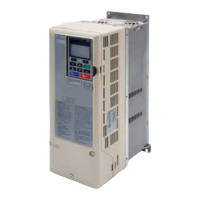
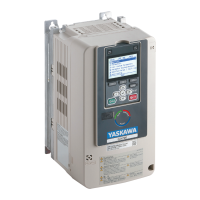
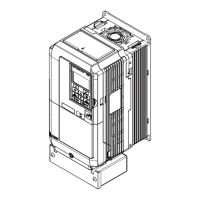
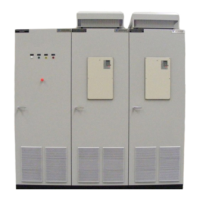
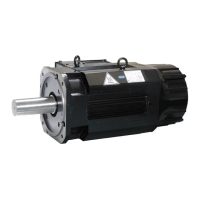
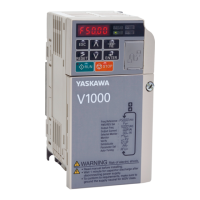
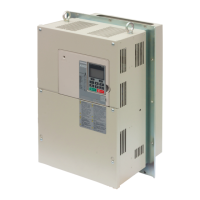
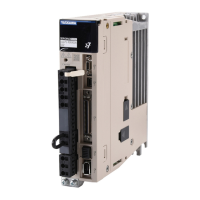
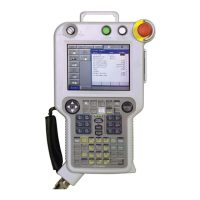
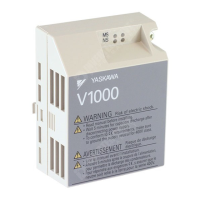
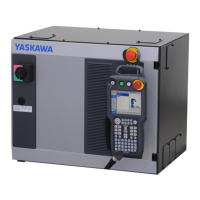
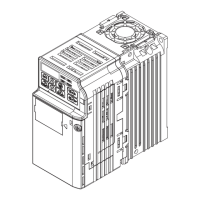
